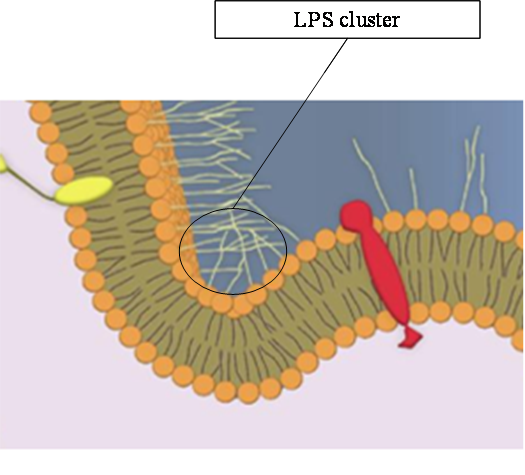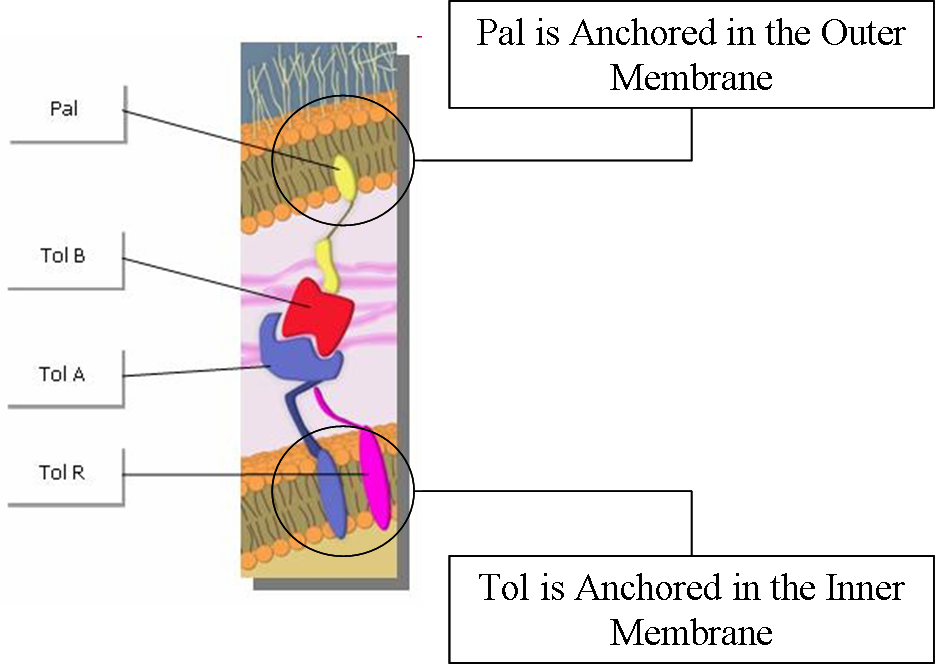Team:Paris/Production modeling versions 2
From 2009.igem.org
DryLab - Vesicles creation
The lipid surface conformation
- The Lipid conformation of the outer membrane is a well known problem: at 35°c the lipid bilayer behaves like a liquid which conformation character is ruled by an energy called the bending energy. This energy represents the fact that the lipid bilayer will search a special conformation depending on the shape and the chemical properties of its constituents. In order to explain the way lipids organize together we need an expression for the membrane bending energy. This is given by :
- E is the energy of a whole lipid bilayer (or monolayer). Kb and Kg are Bending and Gaussian moduli which can be obtained by experiments. γ0 is the intrinsic curvature of the outer membrane which describes the local form of a lipid bilayer when it is at is lowest state of energy ,the more stable. γm and Hg are the mean curvature and the gaussian curvature( see Helfrich [Z. Naturforsch. C 28 (1973) 693] ). dS is a surface infinitesimal element and the previous formula relates how the local surface energy varies with the local mean curvature and the Gaussian curvature. Let us first calculate the energy of two different shapes of membranes, (i) a model of the shape of E. coli before budding, and (ii) after budding of a vesicle.
- (i) We consider the shape of E.coli as a cylinder of radius r =0.3.
- This is a simplified shape based on the heuristic fact that in septa where the vesicle will be constituted principally with lipids of higher bending energy. In fact this model is just a first approach to determine range of parameters and could be developed in a more sophisticated way later.The aim of this first representation is to estimate this energy in the division region of E.coli before division. With this approximation γm = 1/2r.
- Thus for the E.coli lipids membrane the bending energy per aera is:
- (ii) For the vesicles we consider their basic shape as a sphere of rayon r’ so the bending energy by lipid area units is:
- Thus as the area of a sphere is known and is independent of the location on the surface we can write:
- The energy of the same membrane area in E.coli is:
- The relations can provide a basic vision of the statistical repartition of vesicles in case of absence of integrity control system in the outer membrane.
- Ee is the potential energy of the lipid area in E.coli outer membrane before construction of a vesicle and Ev is the energy of the same lipid area but in the conformation after budding including a vesicle shape. So the energy which must be given to the whole system to create a vesicle is:
Mettre une courbe expliquant ceci
- We can suppose that the most easily created vesicles will be the ones which require a minimum energy. By derivation we find that the minimum is obtain for:
- Hence as we know that the range of created vesicles radii is 25 nm to 175nm we can suppose that the r’ is somehow about 100 nm. This leads us to an estimation of the outer membrane intrinsic curvature:
- Which is realistic in the order of magnitude
- In fact we know that the E.coli lipid bilayer is built of distinct types of lipids: Lippopolysacharides (LPS) and simple phospholipids. LPS are located in the exterior lipid layer of the outer membrane. The others are located in the interior lipid bilayer. Moreover, those LPS present a sugar extension toward the medium. Those sugars can bind to each other. So we can assume that they are going to create clusters and to curve the membrane toward the exterior of E.coli.
- This part was dedicated to a first approach of the membrane shape and its characteristics introducing some concept of lipid membrane physics. It enable us to find a range value for one important parameter.
Tol-Pal proteins diffusion
- Tol and Pal are membrane proteins which are located respectively in the outer and the inner membrane. The diffusion of proteins in those lipid bilayers can be modelled by a probabilistic Brownian movement. This diffusion model gives us the law of probability for the location of Tol and Pal on the membranes. It has been observed that the Tol and Pal proteins interact with each other, which is linked to the membrane stability: indeed the Tol and Pal will bind inner and outer membrane and furthermore stabilize the outer membrane using the peptidoglycan rigidity.
 "
"


